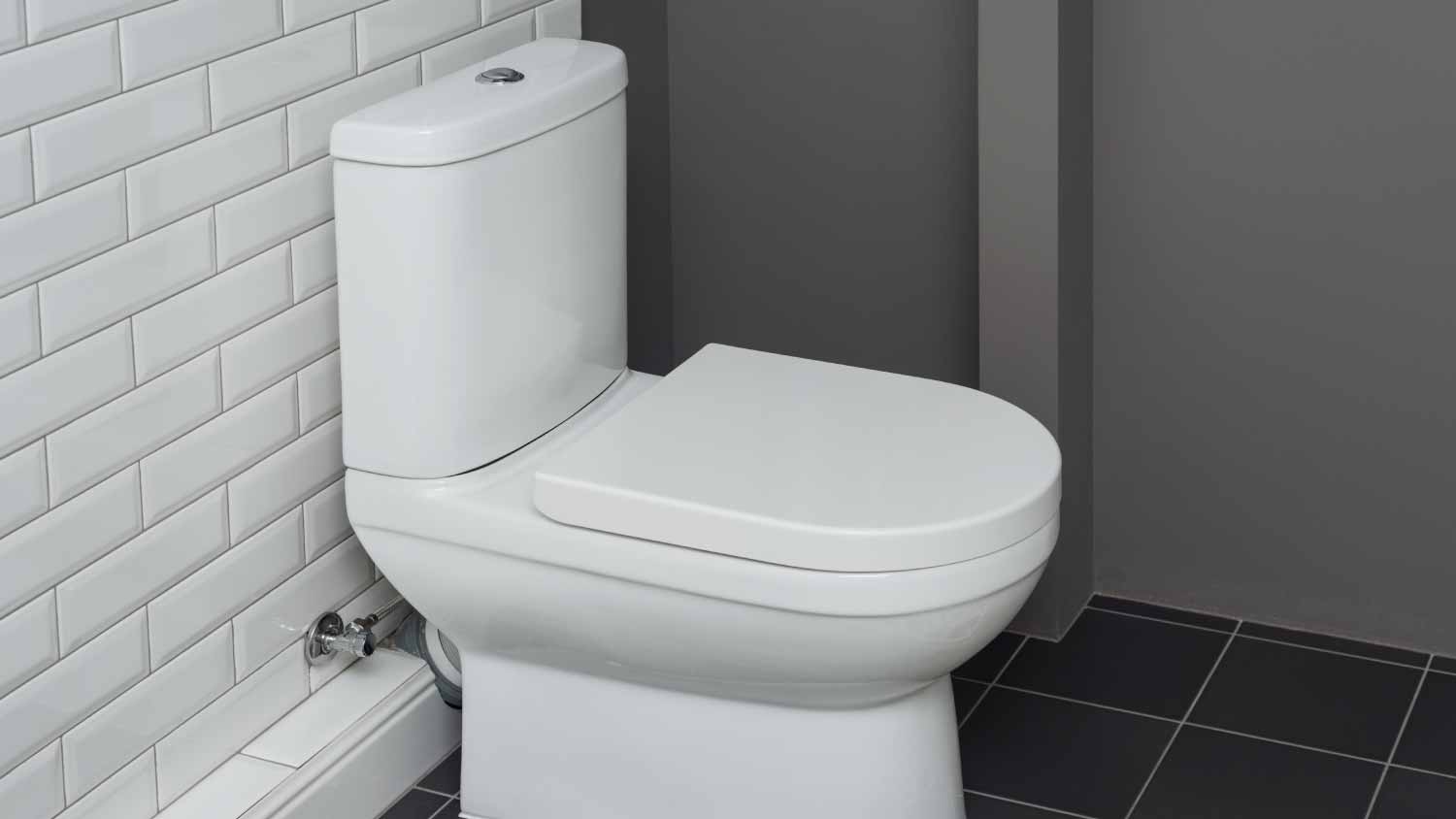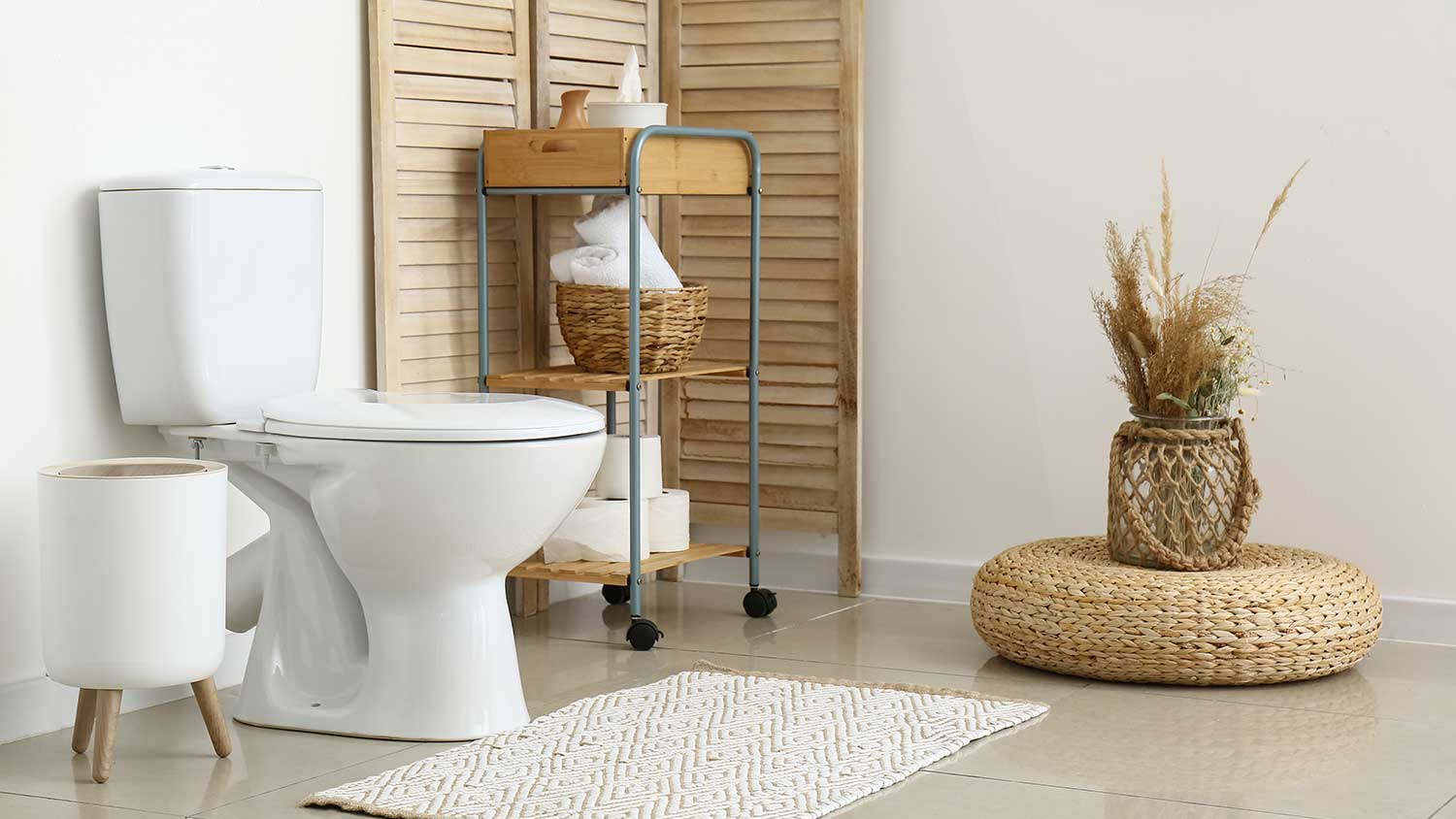One-Piece vs. Two-Piece Toilets: Which Should You Choose?
We’re flushing out the differences between the two toilet types


One-piece toilets have a sleeker design but come at a higher cost.
Two-piece toilets are less expensive and easier to move around.
Both toilet types offer a variety of customizations and options.
If your bathroom remodel plans include a new toilet—or your current toilet has seen better days—one of the first decisions you’ll make is deciding between a one-piece versus two-piece toilet. Several factors will influence your choice, including style, cost, and durability. Our guide will help you understand the key differences between the two types so you can choose the right toilet for your space.
One-Piece Toilets vs. Two-Piece Toilets: Key Differences
On the surface, understanding the difference between one-piece and two-piece toilets is pretty simple. A one-piece toilet features a bowl and tank that are fused together, unlike a two-piece toilet with bolts connecting the bowl and tank. But when you dig deeper, there are more differences to explore.
A one-piece toilet is more streamlined and easier to clean, while a two-piece toilet has more areas where germs and dirt can hide. Because the pieces of a two-piece toilet are separate, it can be less difficult to move it into position for installation. However, actually installing the toilet takes less time with a one-piece toilet.
Two-piece toilets cost less than one-piece toilets, but they’re also more prone to leaks because there are two pieces rather than just one that can crack or become otherwise damaged. Understanding the pros and cons of both can help you make an informed decision when it’s time to replace your toilet.

One-Piece Toilets

One-piece toilets feature a fused bowl and tank, whereas these parts are bolted together in a two-piece toilet. The sleek design of a one-piece toilet is a favorite for modern bathrooms, and this construction is more straightforward to clean. However, these toilets are more expensive and heavier than two-piece toilets.
| Pros | Cons |
|---|---|
| Available in comfort height (17–19 inches) | Heavy |
| Easier to clean | More expensive to purchase and ship |
| Durable | More difficult to repair |
Best for:
Taller adults or those with mobility issues
Streamlined, modern designs
Homeowners who want to spend less time cleaning the bathroom
Pros
One-piece toilets offer a sleek and streamlined design, and because there’s only one piece, they work well in small bathrooms. They also take less effort to clean because there are fewer nooks and crannies where dirt and bacteria can hide. A one-piece toilet also has the option for higher-end finishes, and the installation process is faster.
This type of toilet is available in standard height (between 15 and 16 inches) and comfort height (between 17 and 19 inches), so you can choose which will work best for your bathroom. While standard height will work in most bathrooms, comfort height is ideal for taller adults or those needing an accessible bathroom.
Cons
While one-piece toilets are more streamlined, this factor also makes them heavier than two-piece toilets that you can move in two separate pieces. There are also fewer rough-in choices—the distance between the wall and the toilet’s center drainpipe—which can complicate installation. One-piece toilets are also more expensive than two-piece ones, so they may not be the way to go if you’re sticking to a budget.
Two-Piece Toilets

In a two-piece toilet, bolts hold the bowl and tank together, and you can separate the two pieces when needed. With a lower price point and options for customization, two-piece toilets find their way into the bathrooms of many homeowners. But they aren’t as stylish as their one-piece counterparts and are more difficult to clean.
| Pros | Cons |
|---|---|
| Less expensive | May be too large for compact spaces |
| More options for toilet height and tank size | Less durable |
| More rough-in options | More prone to leaks |
Best for:
Homeowners on a budget
Homes with a larger bathroom
Homeowners who want to mix and match toilet and tank heights
Pros
Two-piece toilets offer more height choices—including comfort or standard height—and you can mix and match toilet heights and tank sizes to ensure your new toilet fits in your bathroom. This type of toilet is less expensive than one-piece toilets and easier to move if you separate the bowl and the tank. There are also more rough-in options that can make the toilet installation location more versatile.
New bathroom fixtures can make your toilet look dingy or outdated in comparison. Now’s the chance to replace it with a modern model, like one with an elongated bowl, to match your bathroom upgrades.
Cons
Two-piece toilets are less stylish and can take longer to install. You can call a local toilet installation professional to do the job and ensure the bowl and tank are connected correctly. Two-piece toilets are also more prone to leaks and have the potential for more issues because there are more parts to maintain.
One-Piece Toilets vs. Two-Piece Toilets

See how one- and two-piece toilets stack up to each other regarding style, features, maintenance, and more.
Appearance: One-Piece Toilets
Both one- and two-piece toilets come in various styles: modern, traditional, contemporary, and vintage. However, one-piece toilets offer a more elegant, trendy aesthetic.
Height: Tie
One-piece toilets and two-piece toilets have the option of either comfort height or standard height. Comfort height is better for taller adults and those with mobility issues, and standard height works well in most bathrooms, especially bathrooms that young children use.
Customizations: Tie
Both one- and two-piece toilets offer customizations, such as:
Energy-efficiency options
Smart toilet features
Price: Two-Piece Toilets
One-piece toilets are higher priced, averaging between $500 and $1,100, while two-piece toilets cost between $250 and $700 (with installation). This price difference is due to a more strenuous production process because one-piece toilets require advanced assembly.
Durability: One-Piece Toilets
While both toilets are durable, one-piece toilets have a single mold design, making them less prone to cracking and leaking. One-piece toilets also don't have couplings, a device connecting the tank to the bowl that can break.
Installation: One-Piece Toilets
The toilet installation cost for one-piece and two-piece units averages $120 to $820. Two-piece toilets are simpler to move during installation because you can handle the tank and bowl separately. However, heavier, one-piece toilets have a faster installation time because no additional assembly is required.
Repair: Two-Piece Toilets
Two-piece toilets are more prone to cracks and leaks in the opening between the tank and bowl. But there are also more options for repairing each part. While one-piece toilets are less likely to crack, when they do, you’ll need to replace the entire unit because repairing an internal crack isn’t an option. You can expect to pay between $150 and $380 for the cost of a toilet repair.
Maintenance: One-Piece Toilets
Because of their connected frame, one-piece toilets are easier to clean and maintain. Two-piece toilets tend to accumulate more bacteria in the space between the tank and bowl, which makes them harder to clean and the upkeep more time-consuming.
Sustainability: Tie
Both one- and two-piece toilets offer water-saving features:
Low flow: These toilets use fewer gallons of water per flush.
Dual flush: This feature offers two buttons, one for flushing liquid and one for flushing waste, and reduces water consumption.
Power flush: With its forceful flush, power systems require less flushing, which increases water savings.
Retrofits: Attach a toilet tank displacement bag (available from retailers for around $9) to your current toilet to reduce the amount of water used for each flush.
Elisa Greenberg contributed to this piece.





- Bathroom Remodeling
- Kitchen Remodeling
- Shower Installation
- Stair Installers
- Bathtub Installation
- Shower Door Installers
- Kitchen Design
- Bathroom Design Companies
- Storm Shelter Builders
- Pre-Made Cabinets
- Kitchen Refacing
- Bathtub Replacement
- Ceiling Tile Installation
- Suspended Ceiling Companies
- Residential Designers
- Stair Builders
- Remodel Designers
- Shower Enclosures
- Home Renovations
- Kitchen Renovations
- Garage Remodeling
- Grab Bar Installation
- Walk-In Tub Installers
- Tub to Shower Conversion
- Balcony Contractors
- How to Choose the Right Toilet for Your Home
- 12 Types of Toilets to Upgrade to in Your Bathroom Remodel
- Pros and Cons of Wall-Hung Toilets
- A Total Guide to Toilet Dimensions and How to Measure for Your Space
- Pressure-Assist Toilets: Pros, Cons, and More of What You Need to Know
- Low-Flow Toilet Problems: Understanding the Pros and Cons
- Toilet P-Trap vs. S-Trap: What’s the Difference?
- What’s the Difference Between Standard Height and Comfort Height Toilets?
- 9 Tips to Reduce Your Toilet Water Usage
- 10 Toilet Facts That’ll Make You Appreciate Your Commode More











